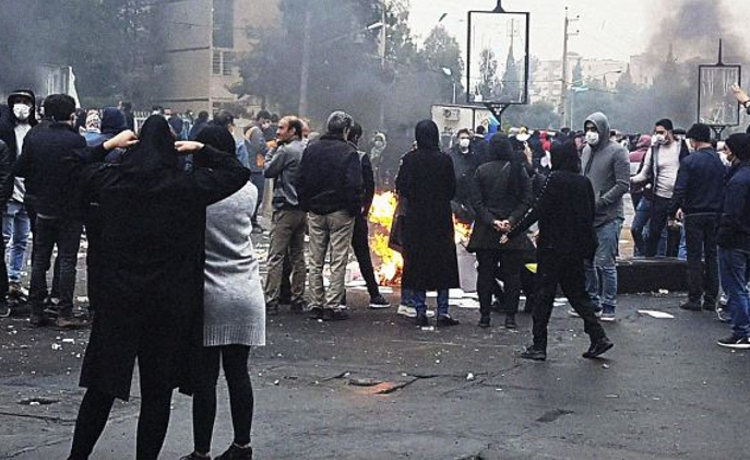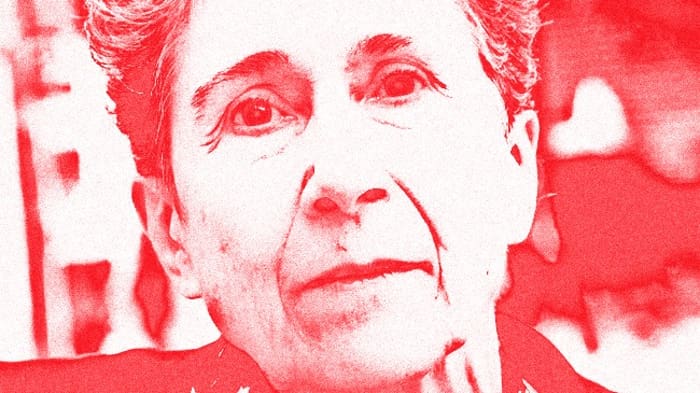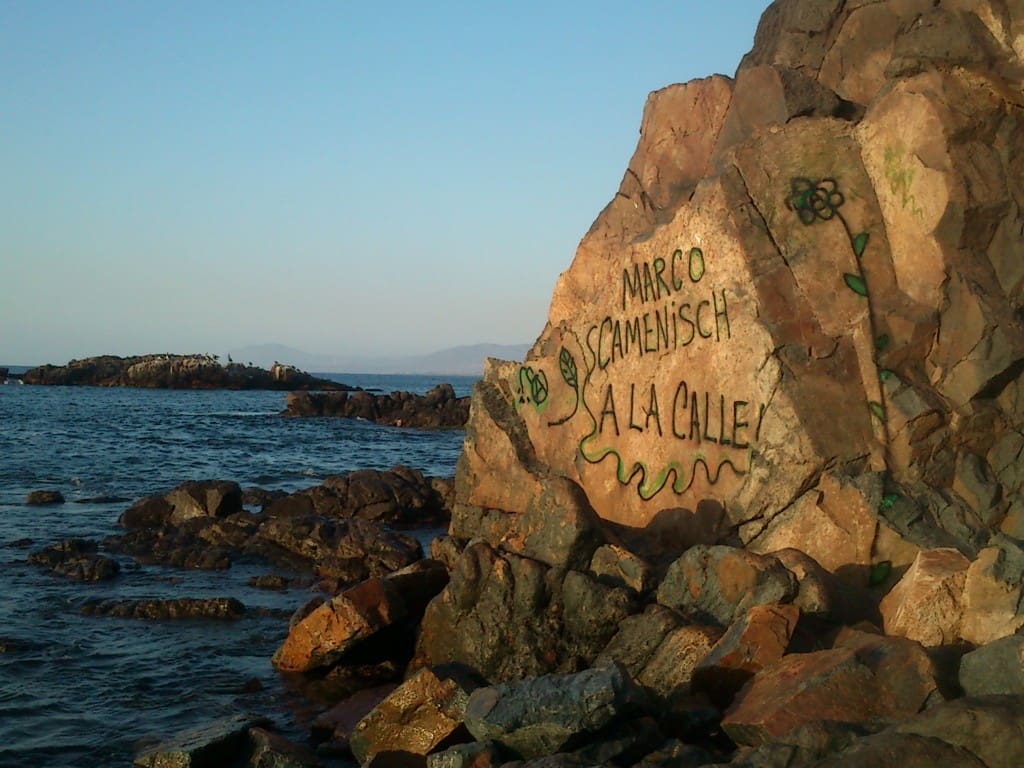“Iran is about to explode.”
An interview with Iranian blogger Mina Khani by Harald Etzbach for the Rosa Luxemburg Stiftung
24 January 2019 (original post in German)
“No matter what the reason is for protests, whether they’re about flooding or the rise in fuel prices, there are always chants of ‘Down with the regime!’ The connection is very clear: we live under an oligarchy and a dictatorship in which we are not free to determine the shape of our own lives or to seek political and social redress for our misery.”
Harald Etzbach: In Iran over recent months, there have been various demonstrations and protest movements: the protests in November of last year; funeral marches for the Quds Force commander Qassem Soleimani killed by a US strike; and now protests related to the shooting down of a Ukrainian passenger jet. What are the dynamics behind these demonstrations and how do they relate to one another? Who is participating in them?
Mina Khani: To answer that, we’ve got to look a little further back. In the last two or three years, certain segments of Iranian society, especially the poorer ones, have taken to the streets repeatedly. There was a string of strikes; the student movement has organized protests both on and off campus. Women have been very active everywhere, as have national minorities—above all Arabs and Kurds. So things have been boiling for a while.
So what happened in November? After the US’s abandonment of the nuclear deal in 2018, supreme leader Khamenei personally convened a panel made up of president Rouhani, speaker of parliament Ali Larijani, and chief justice Ebrahim Raisi, to make immediately binding decisions. This panel representing three branches of government, which bears the clunky name “Supreme Council of Economic Coordination,” met again in November and decided to raise fuel prices, basically from one day to the next. They were trying to implement a version of “shock therapy.”
The protests which broke out the very next day and then quickly spread to the rest of the country had two aspects: first an economic one, since the chasm between rich and poor has kept getting wider and wider, leading to an unbearable situation; but also a political one, because people were enraged by the increasingly undemocratic approach of the government.
HE: Those protests were then bloodily suppressed.
MK: Yes, but then of course the discussions continued. There wasn’t much reporting on it here in the West, but in Iran there were daily reports on those arrested and killed, how many there were, etcetera. There were calls by family members of the dead to take to the streets again. In one case, an entire family was arrested at a funeral, right after they made such a call publicly. The atmosphere was very tense the whole time.
Then came the killing of Soleimani by the US. That gave the Iranian state an opportunity to use the funeral march for its propaganda, to make the claim that although there are problems here and there, when it comes to the Revolutionary Guard Corps, Iran’s borders and security, and Iran’s foreign policy, etcetera, the people stand by the state. It was a big show, and I think the state basically mobilized every single one of its supporters. Shortly after that, the Ukrainian passenger jet crashed, and the Iranian state spent a full three days vigorously denying having anything to do with it before admitting that the Revolutionary Guard was responsible for shooting down the plane.
It’s really important to observe that the protests which then reignited picked up where the November protests left off, and their slogans and demands explicitly referred back to them. So there was continuity there. I think that this whole assortment of protests is connected to the various social and political divisions within Iranian society. Different social classes and political forces express themselves differently.
HE: It’s often said that the protests in November were mostly driven by the poor and working classes and national minorities, whereas now it’s mostly the middle class on the streets. Is that a correct assessment?
MK: That seems a little simplistic to me. In November there were people from different social strata all participating; that is clear just by looking at the names and families of those arrested and killed. It’s also true that a good chunk of the middle class has been downwardly mobile due to the economic crises of recent years. These people have maintained their basic social presentation, but they have lost a lot.
One thing really has changed with regard to the more recent events. The number of people who sympathize with the victims of the plane crash is much larger. You don’t have to have done anything special in order to identify with the victims. It could have been anyone. You don’t have to be political, you don’t have to have been on the streets before, you don’t even have to be against the political system—it’s enough to simply board an airplane and you can become a victim of the miserable situation in Iran. I think it really shook people, and it compelled people from the middle classes, who had been quieter before, to speak out—it affected public figures in sports, art, and journalism, including state TV broadcasters, who published a powerful statement.
HE: Can you talk about the role of women and national minorities in the protests?
MK: At the founding of the Islamic Republic, its founder, Ayatollah Khomeini, honed in on two fundamental divides in order to mobilize the populace: the gender divide and the national divide, both of which find expression through religion in Iran. This was a major factor especially during the Iran-Iraq war. Khomeini was attempting to turn Iran into a Shia theocracy—therefore women must dress themselves a certain way and spend less time in public. There was resistance to this, but ultimately Khomeini would prevail.
There was also a narrative around “heretics” and “infidels.” This referred mainly to Sunni Arabs and Kurds in Iran, but of course also to the Baha’i, who aren’t even recognized. In particular, the Kurdish community in Iran is outspokenly political; Kurds were against the regime from the very outset of the Islamic Republic.
These divides have continued to this day. And increasingly it is becoming clearer that other national minorities don’t really see themselves as part of Iranian society. Among other things, this has to do with the fact that many of them live in the geographical periphery of the country. This has led to the development in recent years of strong national movements, especially in the southern parts of Iran—in Balochistan and other regions inhabited by Arabs.
HE: The regime infamously tries to denounce protesters as agents of the West. And Trump has tweeted out his solidarity with demonstrators, in Farsi no less. On the other hand, there are videos showing students at the University of Tehran declining to tread on large Israeli and American flags that were laid on the ground in front of a university building. What do you make of this?
MK: The Islamic Republic took up this anti-imperialist and anti-Zionist discourse immediately upon its founding. It is no longer a sign of resistance, in Iran, to be pro-Palestinian or anti-Zionist. Anti-Zionism is an ideology propagated by the state. That’s the backdrop for what happened at Tehran University. When people do something within the country, it sometimes means something else than when the opposition elsewhere does it. It’s not the case that these students are somehow pro-Trump or pro-Zionist. The pressure to do certain things, not being allowed to decide for yourself, is simply really hard to take for many people in Iran. We’ve got to look at these things in the context of the Iranian state’s lack of credibility and not as the expression of some cogent position on Israel or Palestine.
The student movement has very clearly distanced itself from Trump’s statements. Of course they don’t want the movement to be associated with any meddling attempts by the US, because this gives the regime a justification for repression—but also because they stand against the entire agenda of the US in the region.
HE: How are opposition currents in Iran and in the diaspora oriented toward the current protests? Are there explicitly leftwing positions?
MK: The situation is getting more tense, and both slogans and protest forms are getting more radical. As always when things are this combustible, it provides an opportunity for various currents within the opposition to distinguish themselves. Among the Iranian diaspora, though, the left has gotten very weak. This doesn’t mean that there aren’t that many leftwing Iranians—they are just somewhat clueless about what to do with the most recent developments. It’s different for the rightwing opposition, because they have no compunctions about cooperating with pro-Western institutions, where there is a lot more money and resources to be had.
The Iranian left is having a hard time; it is mostly making itself scarce, even in the political debate with the Western left. The rightwing opposition, by contrast, is celebrated. This leads to Iranians having a certain image of the opposition outside the country: they are people who make a lot of money trying to tell us what to do. Nevertheless, many Iranians within the country rely on the foreign opposition, mainly because of the heavy repression. For example, they send protest videos to foreign media outlets simply because they want them to be reported on. When they do this, they often can’t really surmise which political forces are behind these broadcasters. So it’s really difficult in this context to analyze which Iranian forces domestically are working with which forces abroad.
At any rate it can be said that the workers and teachers in Iran who are the most organized refuse to take up contact with such institutions. They have generally been fairly cautious in their statements with regard to the protests, in order not to endanger their jobs. The student movement has become quite leftwing in recent years, however. You can see that in their slogans like “Students and Workers, Unite!” or “Work, Bread, Freedom!”—which have been taken up by workers, just as slogans from the workers movement are taken up by students.
If you follow discussions among Iranians on social media, though, you’ll observe that the voices of leftists in the diaspora are maybe a bit quieter, while those within Iran are rather loud. This is remarkable, because the left in Iran faces massive repression. The whole discussion about connections between social and political questions, the national question, the question of women, is being led by the left in Iran, in the unions or in the student associations. The Iranian left is trying hard to organize from below, doing a ton of groundwork; they avoid standing center stage, though, because they would immediately become targets for repression by the regime.
HE: What do you think the future will hold? In November, the protests were brutally crushed. Amnesty International reported several hundreds dead and thousands jailed. The actual totals are probably significantly higher. Is something similar in the cards now?
MK: After the Ukrainian airliner was shot down, we could see that the regime was trying to be a little more careful—not in terms of arrests, but in terms of deadly force or shutting down the internet. I think this is because the regime has the feeling that the world is still watching, that the pressure is still there. The discontented segments of the Iranian populace are reacting very quickly at the moment. It only takes the slightest instigation and they’re back out in the streets. It is obvious that the Iranian state can’t simply go on as before without facing massive organized resistance.
One thing is very important: it’s been like this for several years now, that no matter what the reason is for protests, whether they’re about flooding or the rise in fuel prices, there are always chants of “Down with the regime!” The connection is very clear: we live under an oligarchy and a dictatorship in which we are not free to determine the shape of our own lives or to seek political and social ways out of our misery. That’s the core of my analysis: as long as this situation does not change fundamentally, as long as people feel unfree and cannot lead better lives, this discontent will remain and can no longer be concealed. In my opinion, Iran is on the brink of a giant explosion, bigger than anything we’ve seen to this point.
Mina Khani is an Iranian-born author and artist living in Berlin. She began blogging in Farsi ten years ago, writing on political and social topics. Three years ago she began publishing texts in German about the political situation in Iran. She writes primarily about social movements, especially women’s movements. Her articles in Farsi and German have been published mostly in leftwing newspapers and magazines. She also works as a dancer and actor.
Harald Etzbach is a historian and political scientist working as a translator and journalist. He publishes mostly on topics relating to the so-called Middle East and North Africa, and US foreign policy.
Translated by Antidote
Featured image: Street blockade during a demonstration against the hike in fuel prices in Shiraz, Iran, 17 November 2019. Source: alliance / abaca via Rosa Luxemburg Stiftung’s website





